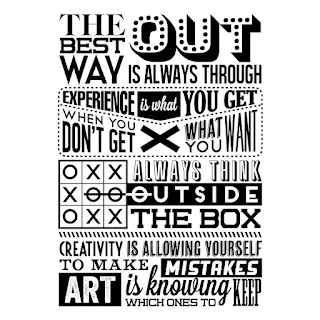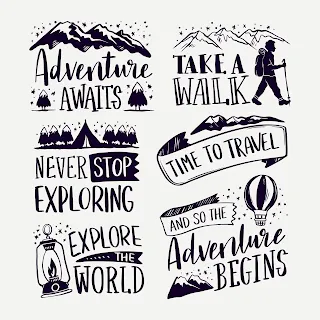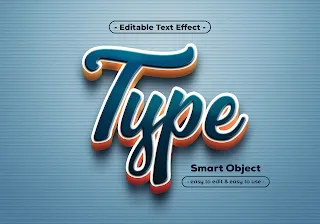Graphic design is made up of visual elements, the building blocks of design. Through artistic expression, these elements are chosen and arranged on a surface to convey an idea. The basic visual elements that make up graphic design include line, color, shape, texture, space, form, and typography.
Typography, in particular, is a commonly used element in graphic design and serves as a direct way to communicate visually. It is often used as headers or in paragraphs in various designs such as magazines, posters, websites, or advertisements. A single letter in a typeface is a combination of geometric and organic shapes that come together to create a larger shape.
Graphic design is made up of visual elements, the building blocks of design. Through artistic expression, these elements are chosen and arranged on a surface to convey an idea. The basic visual elements that make up graphic design include line, color, shape, texture, space, form, and typography.
Typography, in particular, is a commonly used element in graphic design and serves as a direct way to communicate visually. It is often used as headers or in paragraphs in various designs such as magazines, posters, websites, or advertisements. A single letter in a typeface is a combination of geometric and organic shapes that come together to create a larger shape.
This unique letter shape is an entity and is part of a complete typeface made of other letter shapes. The characteristics of every typeface can be broken down into what is known in design as the anatomy of type. It’s the type of shapes given to the anatomy of type in each letter that gives the typeface its distinct look and feel.
Type is not simply about communicating words, but also about the style of those words and the way they are arranged on a page. Typefaces can be part of a family of various weights which can be used to express various tones or create a visual hierarchy in the design. Typefaces are like voices with accents and dialects that have their own distinct pronunciations and characters, therefore, typefaces don’t just communicate literally but also communicate visually.
The choice of the typeface used in the design is crucial to set the intended look and feel, set a tone, and add character to a piece of work. Typefaces have evolved over time, the first typefaces were designed to be practical, cut out of wooden blocks, or cast in lead to work in a print press for mass production. Others have originated from various design movements but what they all have in common is that they have all been created to fulfill a particular purpose and express a particular look and feel.
Today, there are many categories of typefaces such as serif, sans serif, slab serif, rounded, script, blackletter, decorative, and abstract to name a few with some sharing characteristics of various categories. The versatility of typefaces makes them a powerful visual element in graphic design.
Functional typography is used primarily to convey information in a clear and legible manner. It is often used in headlines, body text, and other areas where readability is of utmost importance. Examples of functional typography include the use of traditional serif fonts, simple layouts, and minimal embellishments.
Decorative typography, on the other hand, is used to add visual interest and personality to a design. It is often used in headlines, titles, and other areas where the design needs to stand out and grab attention. Examples of decorative typography include the use of bold and unique fonts, creative layouts, and embellishments such as drop shadows, outlines, and gradients.
In summary, functional typography is used to convey information while decorative typography is used to add visual interest and personality to a design. Both are important in creating effective and engaging designs.
In summary, these examples demonstrate how typography can be used in various ways to create different visual effects and convey different messages.
- Exemplar 1: uses a traditional serif font in a simple block layout, creating a traditional feel.
- Exemplar 2 and 3: use more complex compositions with columns and increased type elements to add contrast and create a dynamic layout.
- In Exemplar 3, a mixture of type weights and negative space is used to create contrast, hierarchy, and structure.
- Exemplar 4: uses a clean and bold header with justified type at a unique angle to create contrast and movement on the page.
- Exemplar 5: uses a decorative font for the title or header and a bold message with line bars to create a bold and assertive feel.
- Exemplar 6: uses a serif font with thick spines, thin crossbars, and exaggerated serifs to create a sophisticated and elegant look.
All these examples show that typography can be used both functionally and decoratively to create different visual effects and convey different messages. Even though there are creative aspects to these compositions, they do not distract from the overall message but instead, they complement and add sophistication to it.
The examples provided showcase the various ways in which type can be used in the design.
- Example 1 uses print block letters in a creative and visually interesting way, creating a face-like shape.
- Example 2 uses a 3D-generated type to add visual depth and dimension.
- Example 3 focuses on the craft and beauty of geometric shapes, using the type as a piece of design art.
- Examples 4, 5, and 6 push the limits of legibility, alignment, and contrast, creating compositions that are more about visual texture and shape rather than the legibility of the message.
Overall, these examples demonstrate how type can be used both functionally and creatively in design, to communicate a message and engage the viewer emotionally.







